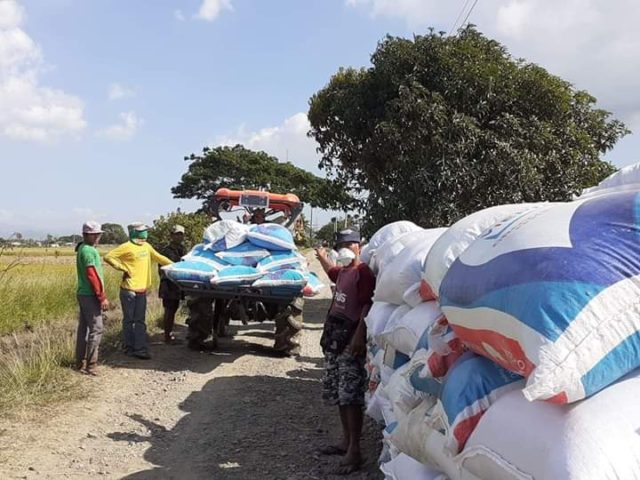Bountiful harvest of a farmer member of the Hilagang Balangkare Irrigators’ Association in Gen. Natividad, Nueva Ecija. Photo from Ronald Gadia of UPRIIS Division II, Talavera, NE.
CABANATUAN CITY – Farmer Enrique B. Gallardo readily credited his harvest of 211 cavans from his one-hectare farm to the sufficient irrigation supply this season.
His farm was serviced by the Pantabangan Dam through PRIS Lateral C8 for the entire dry cropping season.
Gallardo, also the president of the Hilagang BalangkareIrrigators’ Association (HBIA) in Gen. Natividad town,believed that an efficient irrigation system is one of the most important requirements to attain the government’s goal of food sufficiency.
This, as the National Irrigation Administration–Upper Pampanga River Integrated Irrigation, which operates the mammoth Pantabangan Dam in Nueva Ecija, is keeping the system ready for the forthcoming rice cropping season amidst the Luzon-wide enhanced community quarantine, a ranking official said on Saturday.
Engr. Rosalinda B. Bote, department manager of UPRIIS, said they have scheduled their cut off this April 30 as harvesting is ongoing within the UPRISS’ service area to restart water distribution on May 16 for the early wet to the main cropping season.
“Magaganda ang ani at mataas ang (presyo) ng palay. Magkakaroon ng early wet nang May 16,” Bote said, adding that the Department of Agriculture provides for seed and fertilizer subsidy on top of the P5,000 cash card for farmers with .5 hectare and below.
A check showed that the average prevailing farm gate price of palay (unhusked rice) was P19 a kilo.
Bote said the agency programmed for water supply 136,583.32 hectares for the next season.
Bote reminded farmers that the water reserve of Pantabangan Dam will only have to compliment rainwater: “Gamitin po natin nang wasto ang tubig ulan, tubig mula sa sapa at ilog upang makapag-imbak tayo ng tubig sa Pantabangan Dam na gagamitin natin sa susunod na sakahang panag-araw.”
She also encouraged farmers to start early land preparation so that palay can be harvested before theusual coming of typhoons and floods in October.





